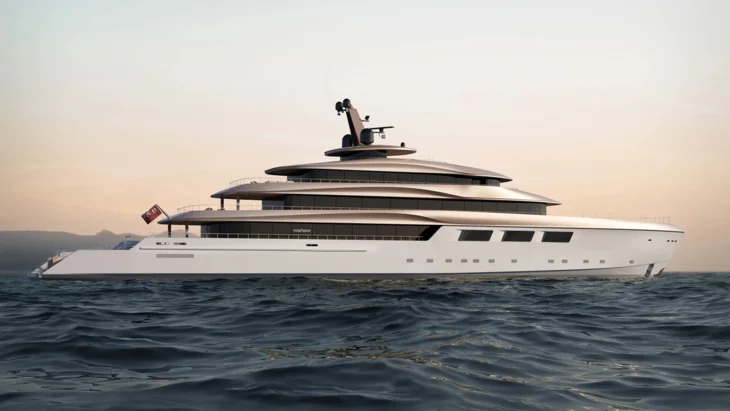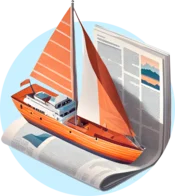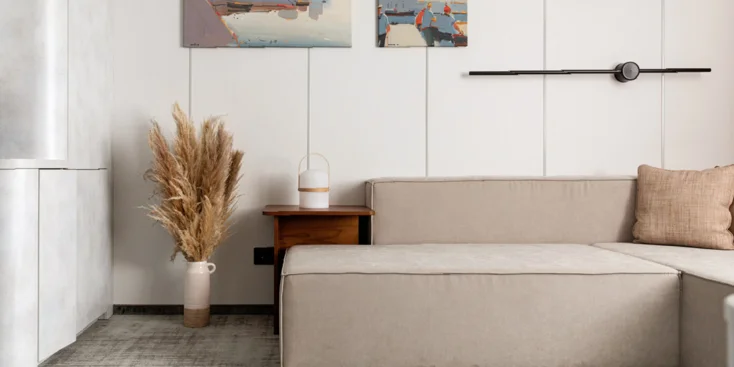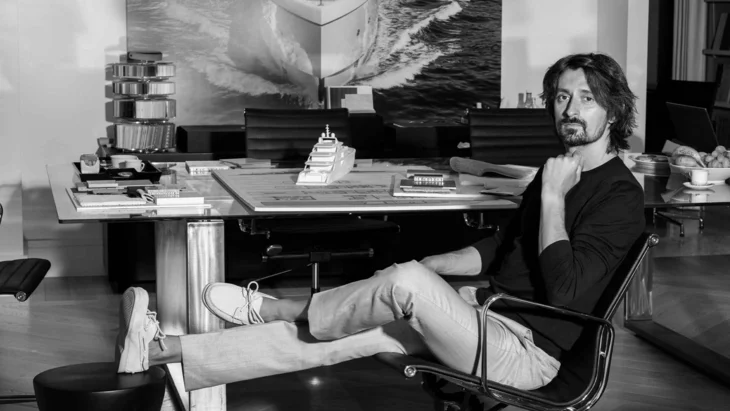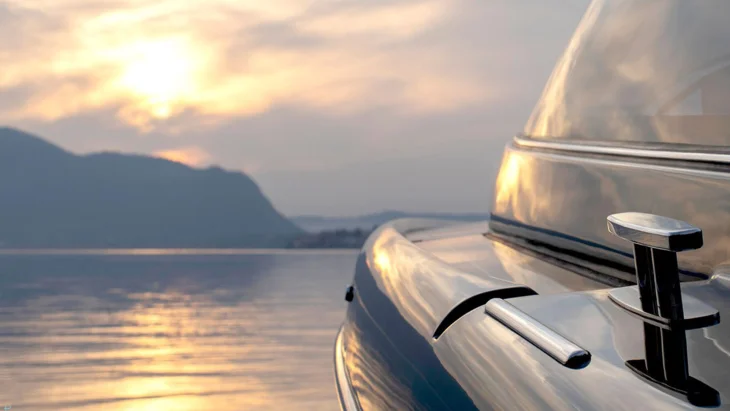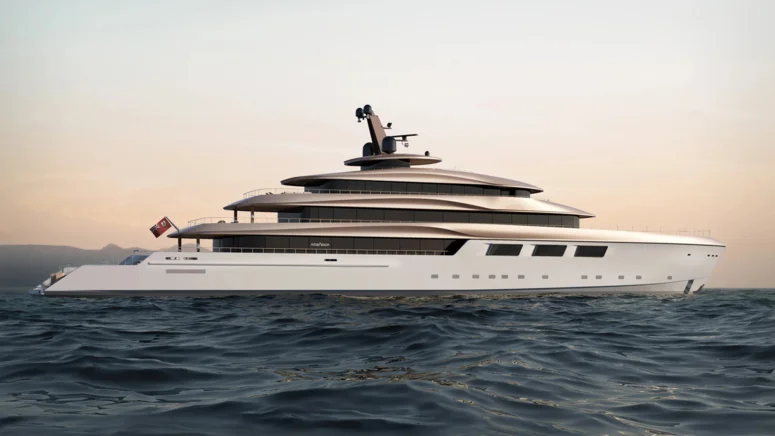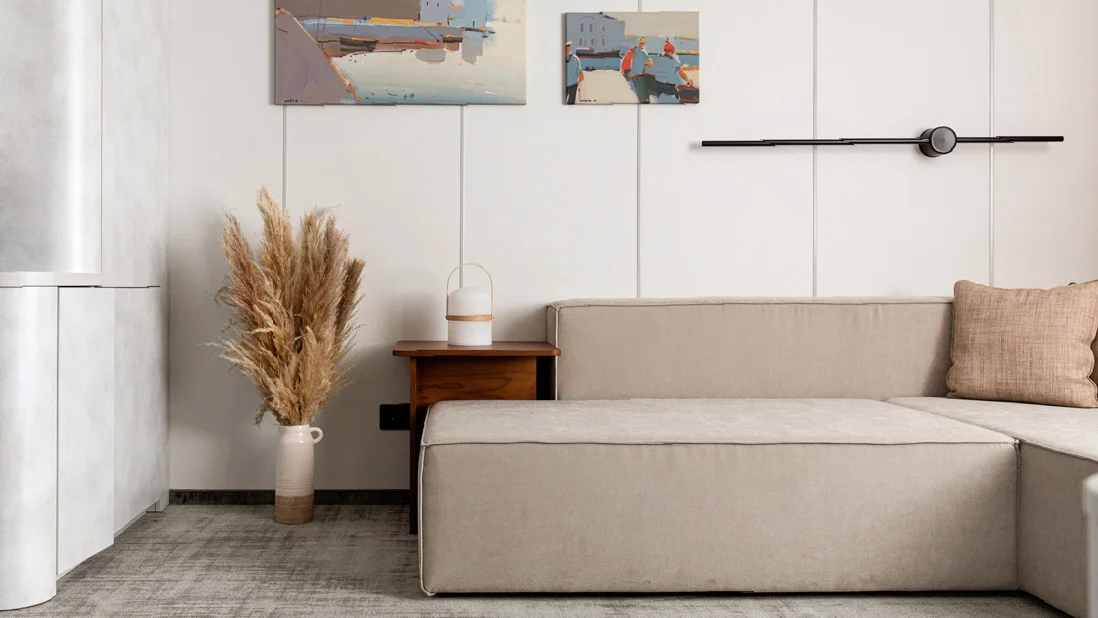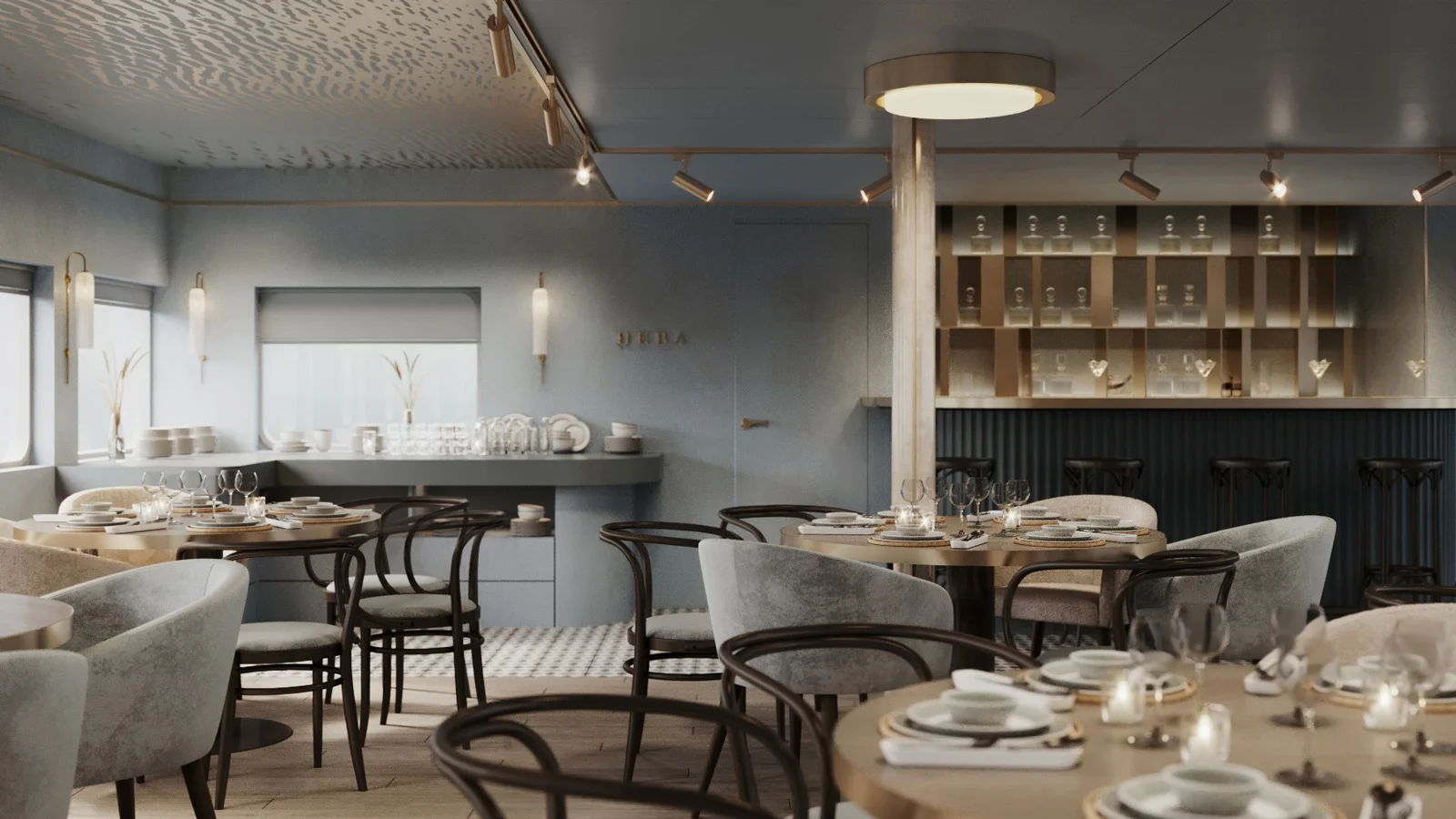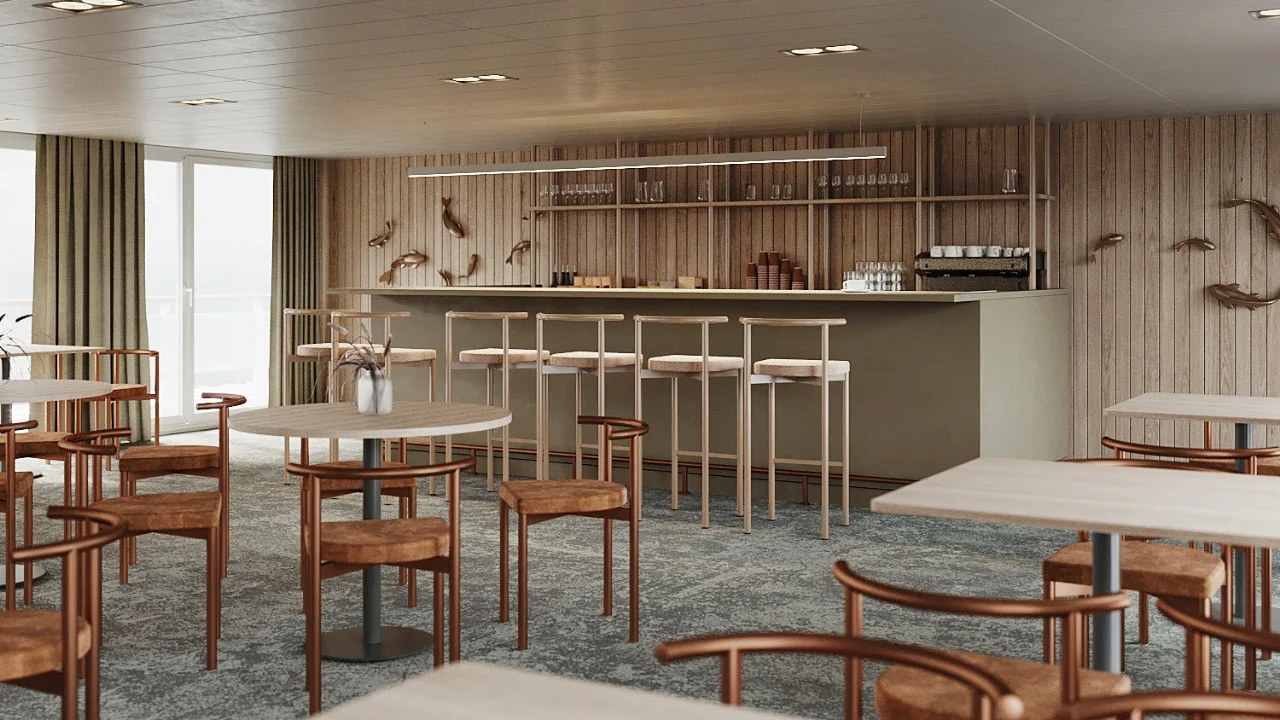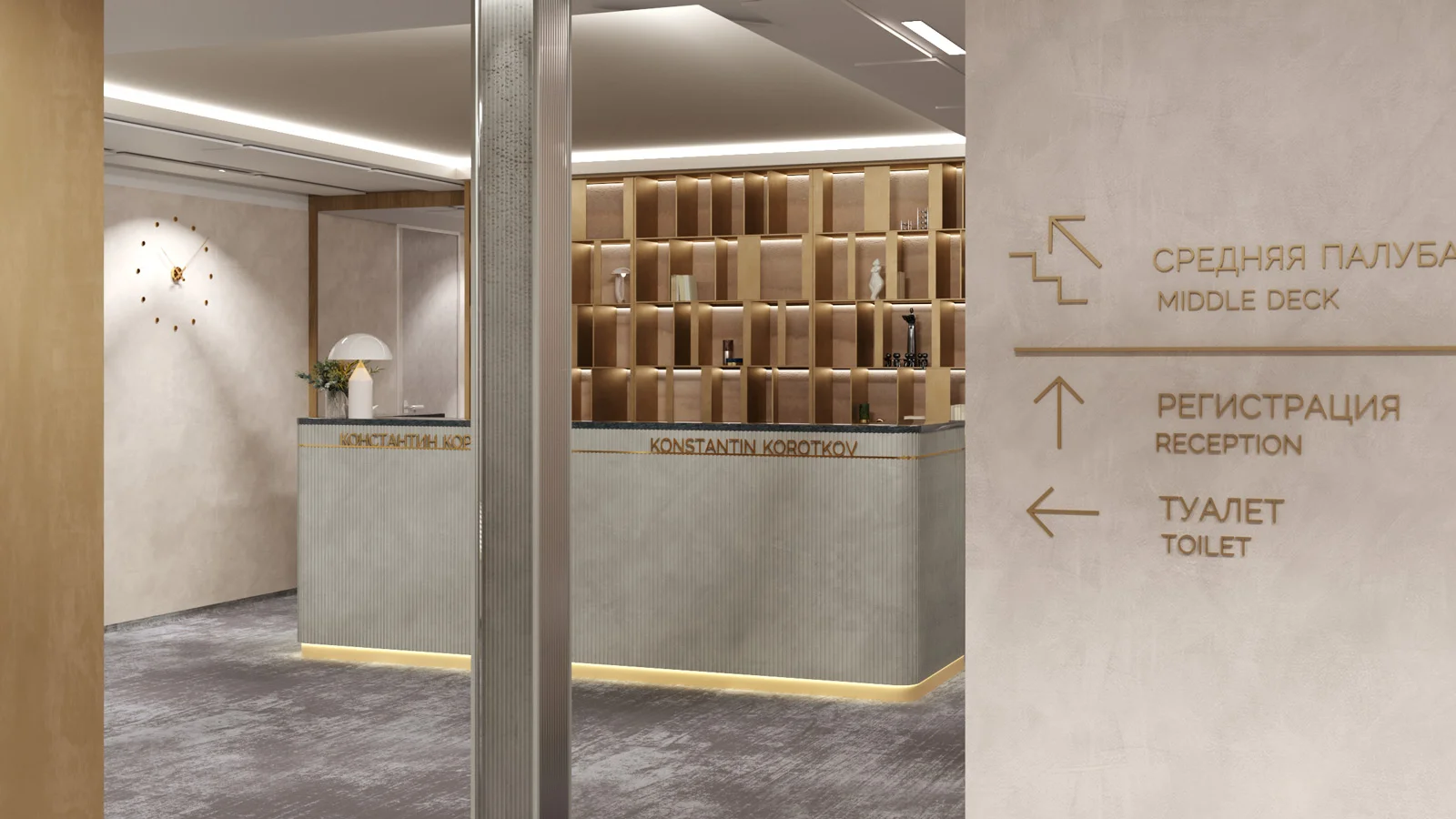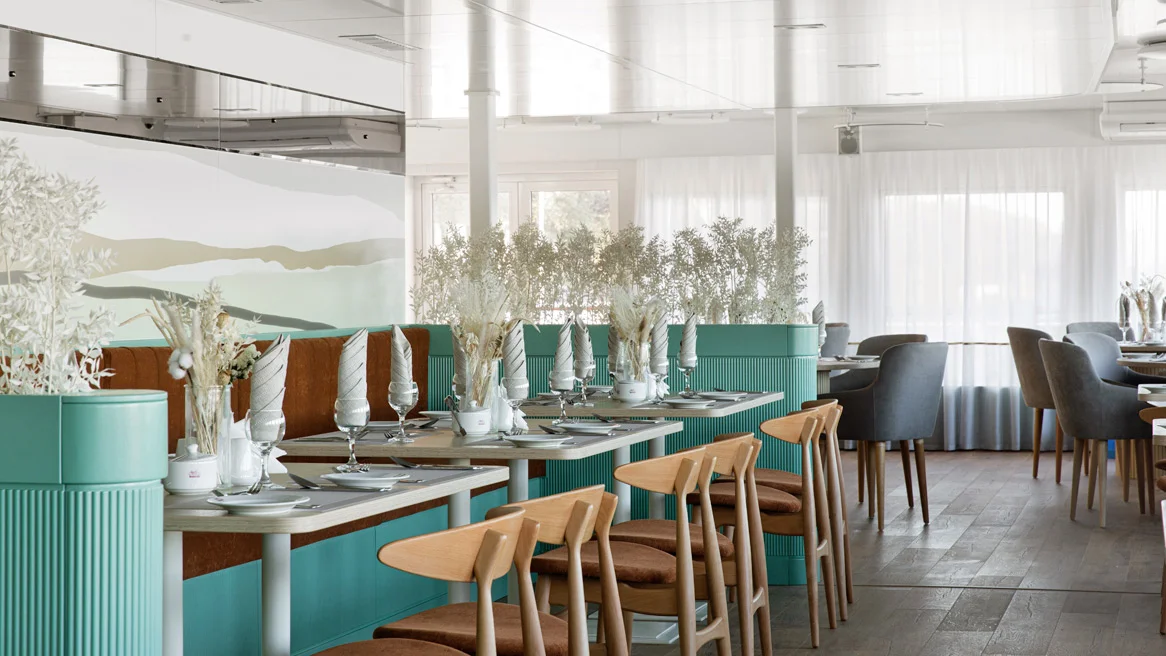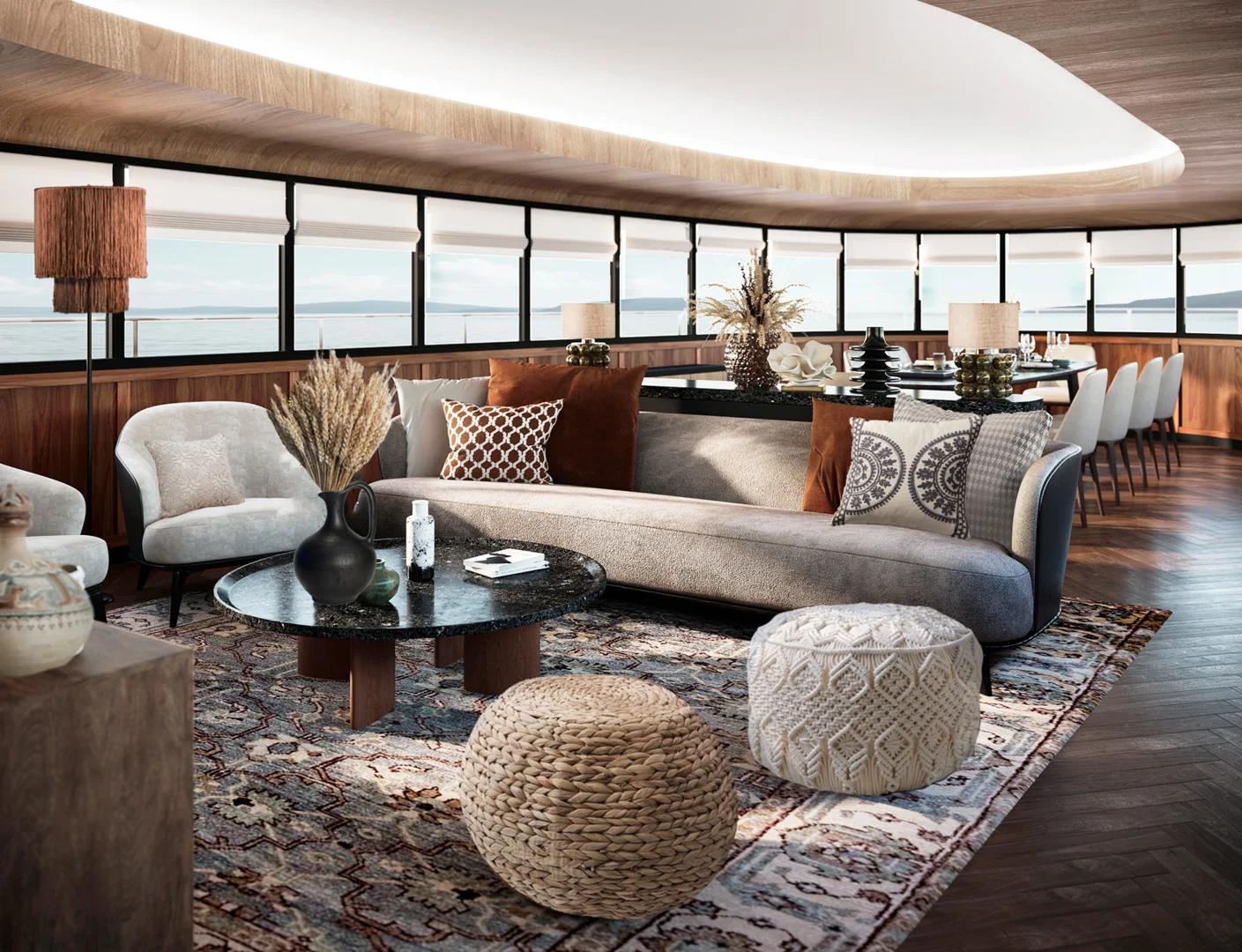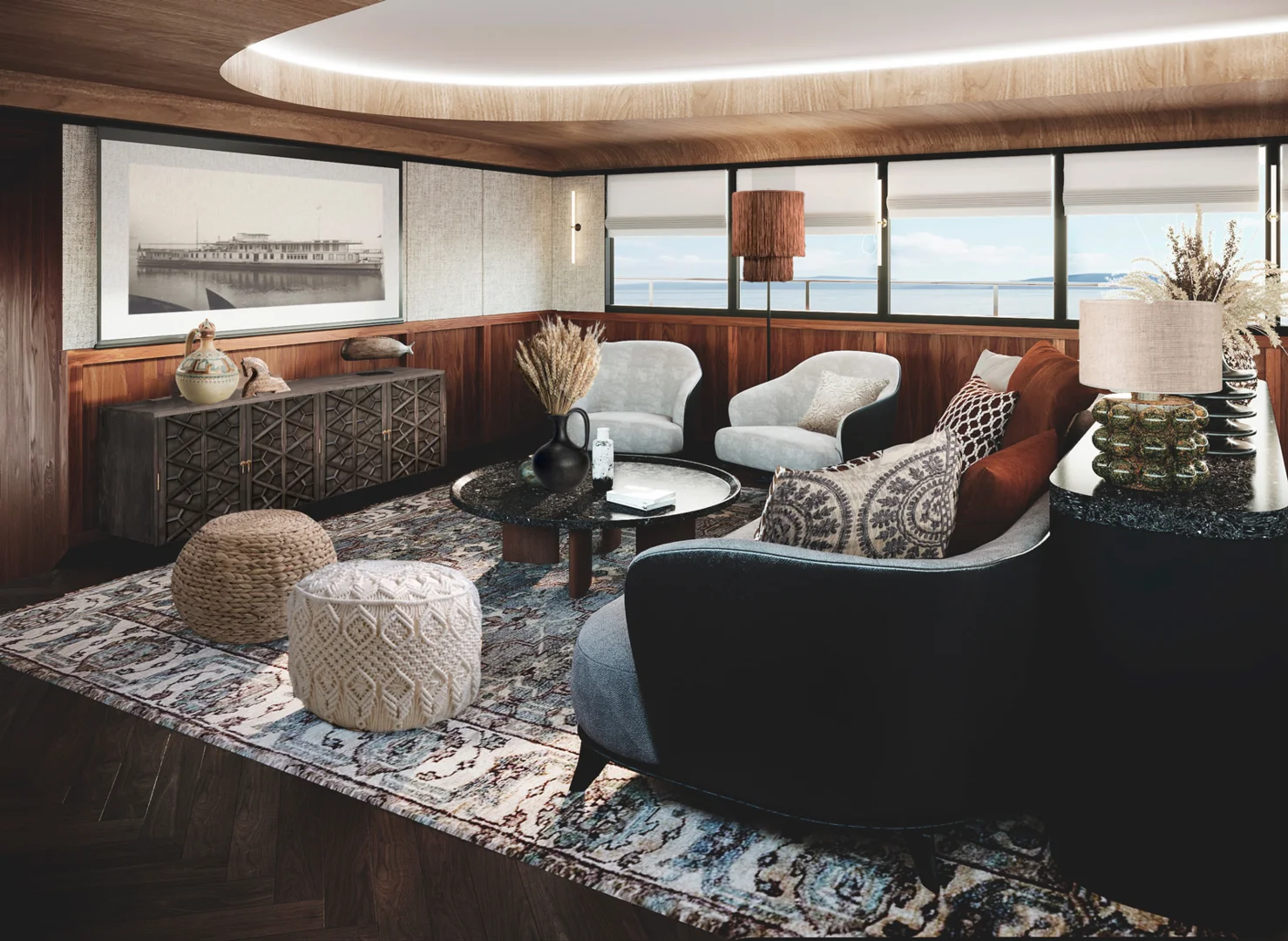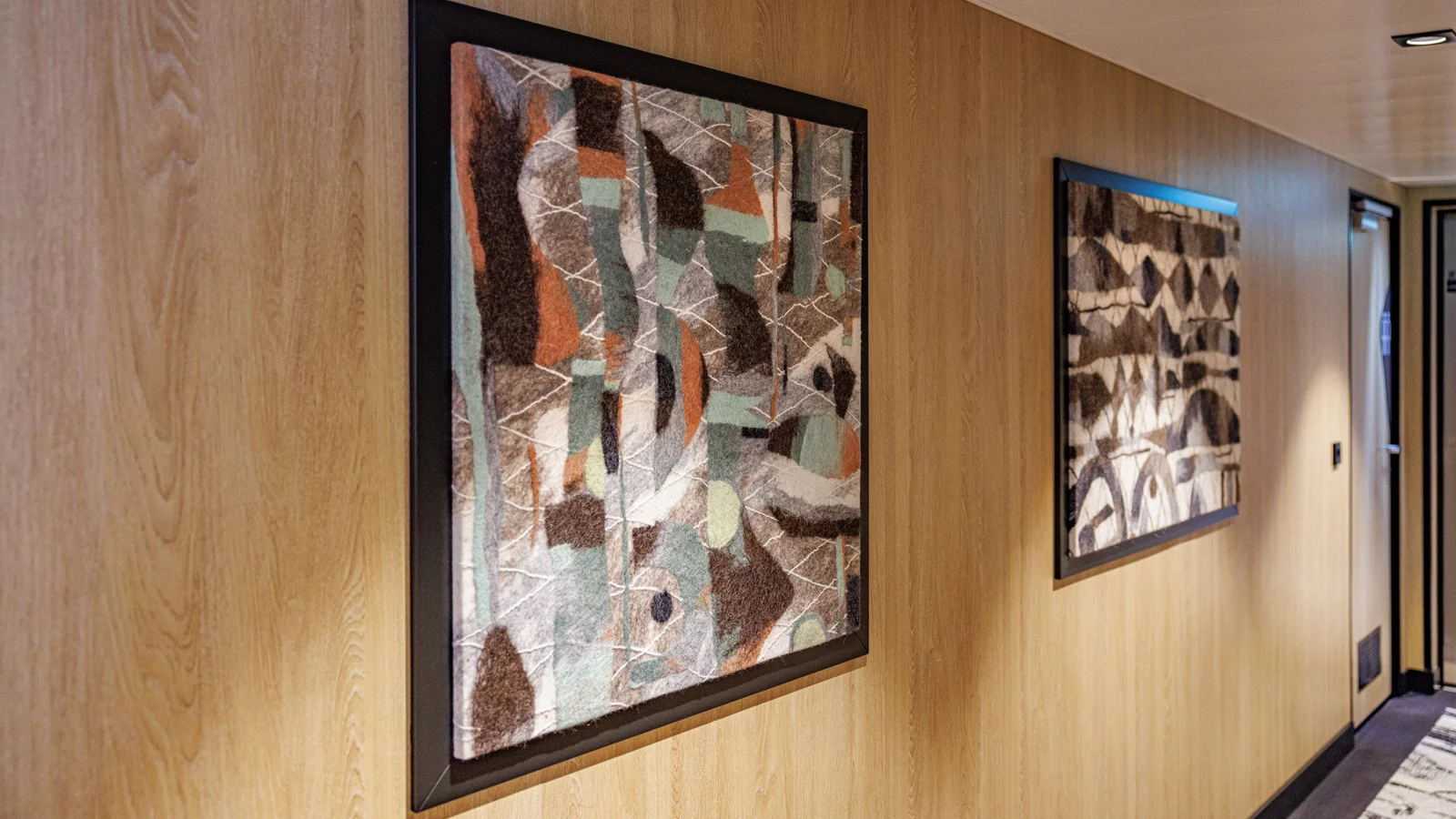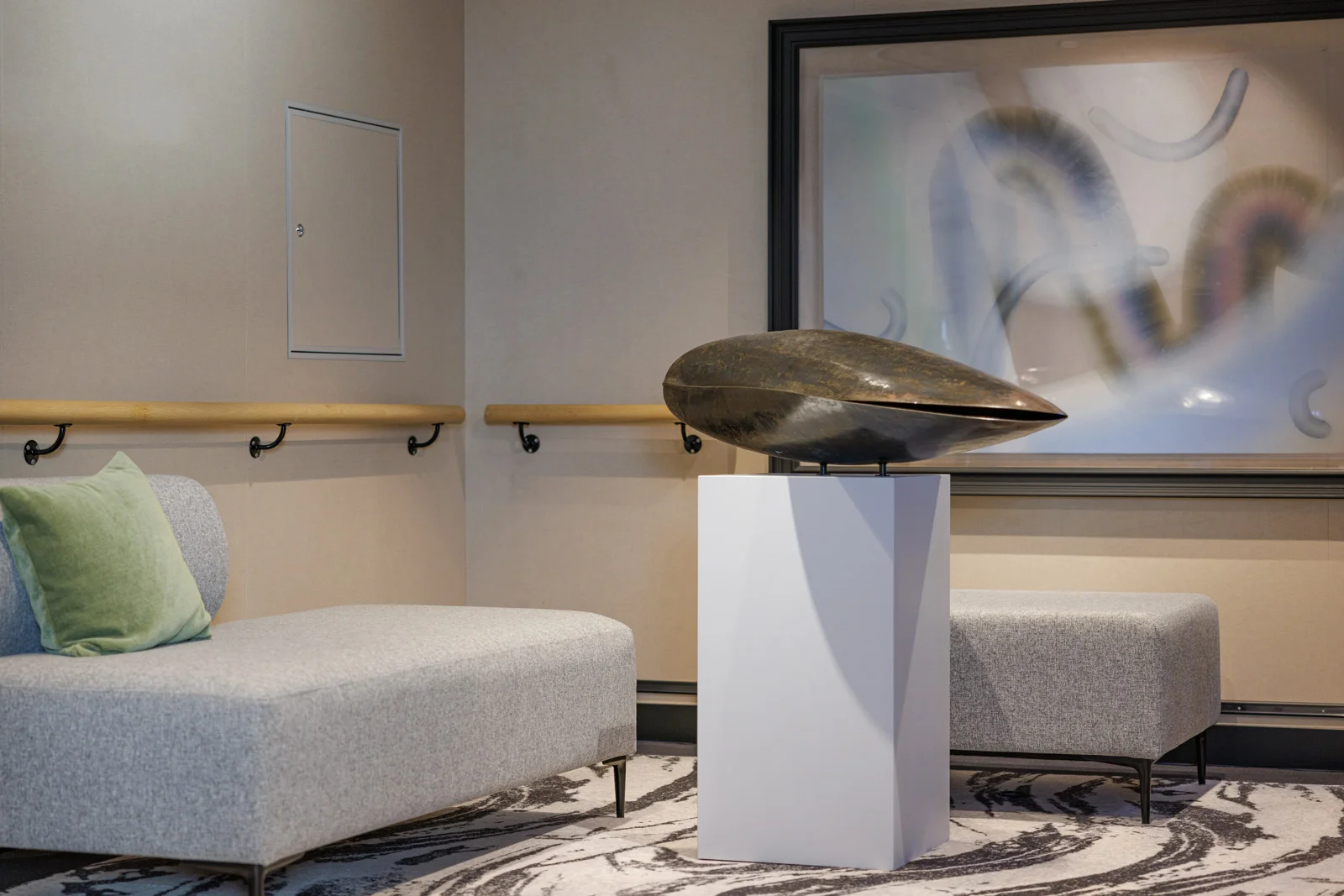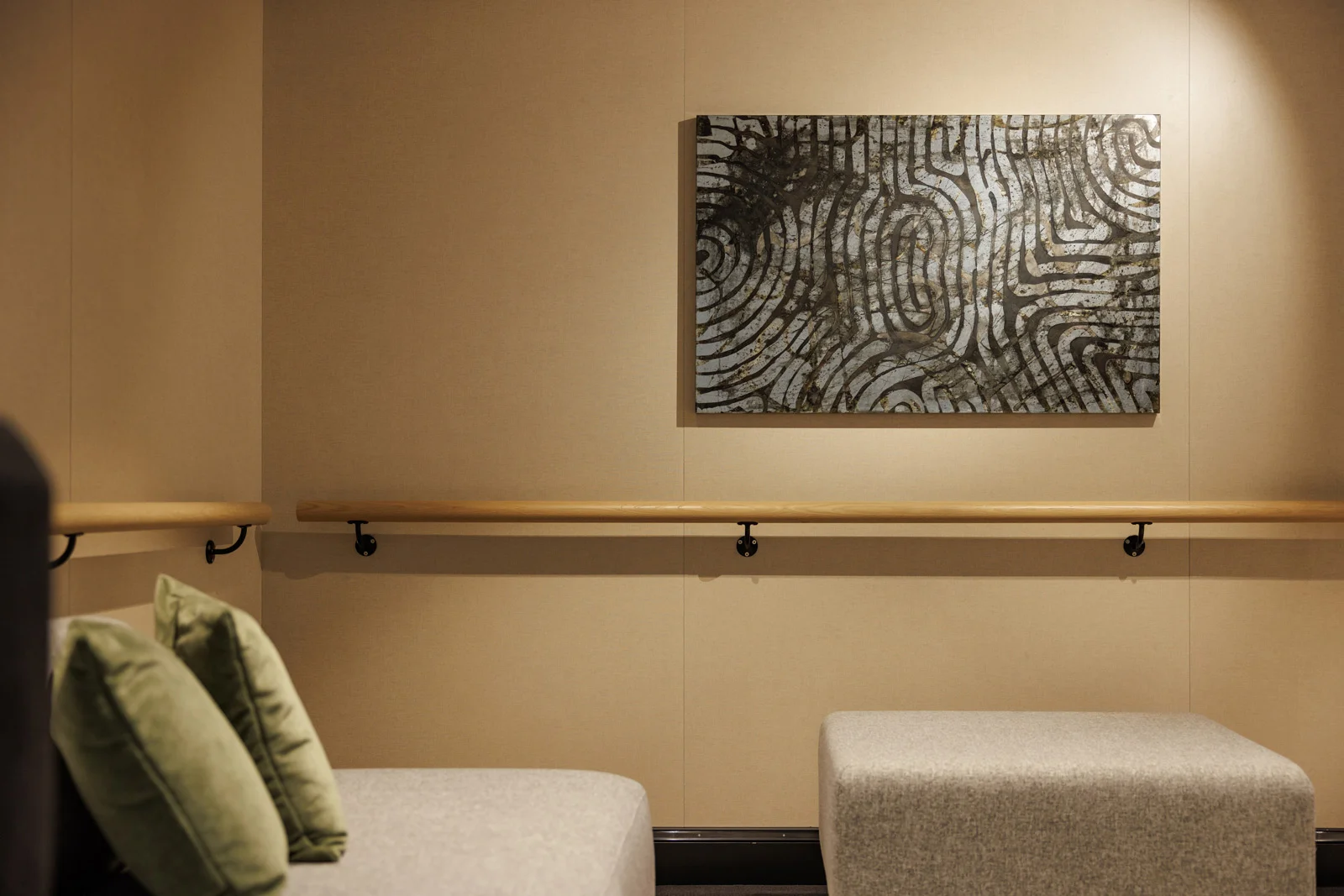A look inside: a yacht and a cruise ship interior-wise

A relatively poor development of the cruise industry despite the abundance of great rivers and inland waters in Russia is normally explained by lack of high-quality modern passenger fleet. But now that people tend to travel abroad less, the popularity of water tours is growing. As a consequence, one can see a change in the very idea of recreation on the water, which today is being shaped by such design studios as Horizon.
Horizon Studio has rather an unusual specialization for Russia. How did you come to ship interiors?
We started with work on public spaces, but recently we have had a focus on ship interiors. Mainly cruise passenger ships, both new that are being built now, and old ones that need a refit in accordance with modern standards. If we look at a refit of a motor ship like “Omik” (spoken for “OM”, which is a series of two-deck river motor ships with a length of 42-45 m – Ed.), the tasks are absolutely the same as those for yachts. When somebody buys a motor ship for a refit, quite often they want to turn it into a small river yacht with three-four cabins for personal, corporate or commercial purposes.
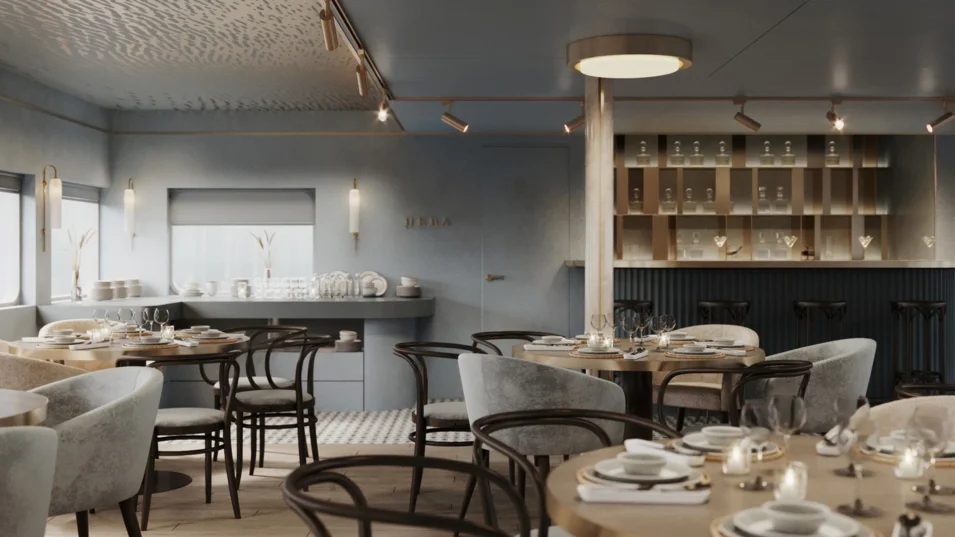
When you build a new vessel, you can think of the interaction of exterior and interior spaces, which is really important for yacht design. But what do you do if it is a ready-made motor ship?
“Omik” ships were built in the 1960-1970s, and it is probably the biggest issue that influences the interior. Firstly, we can’t change the hull or the superstructure considerably, which makes it harder to arrange all the modern utility systems like ventilation, air conditioning, etc. There is just no space for them – that is the way the ship was designed. If we could just draw beautiful interiors, the result would be too different from the pictures. And as we are really interested in the high-quality realization, we delve into all these issues. We wriggle, twist and turn to keep the headroom comfortable, or instance. The exterior of the ship does influence our work, too. In a sense, we are trapped in the style that it was designed in, and can’t ignore it, or pretend that it is a modern vessel. So due to this context the interior turns out to be a little retro, too, and we either preserve and reinforce this direction, or smooth it out a bit.
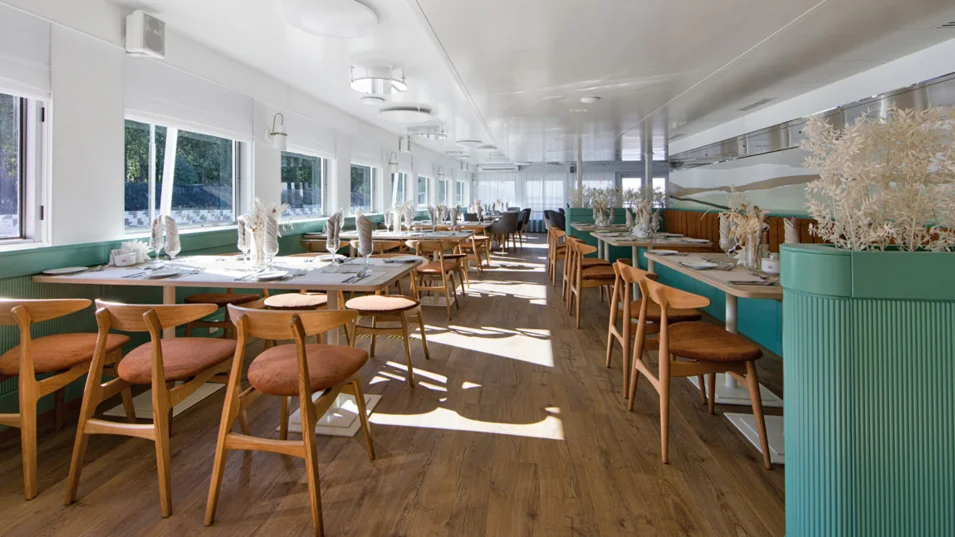
One of your projects, “Konstantin Korotkov” motor ship, does not look retro at all…
This was the first project, where we developed all of the interiors. We wanted to make them light and fresh, but at the same time not too hi-techie. As a result, it is a soft, Scandinavian style that does not conflict with the appearance of the ship. Inside there is just a comfortable modern space. At present we are working on a refit of “Mstislav Rastropovich” ship, which wil feature much more classic retro interiors. It is exciting when the ships belonging to one company turn out to be very different, as you can go on a few cruises in a row, but your experience will be different every time.
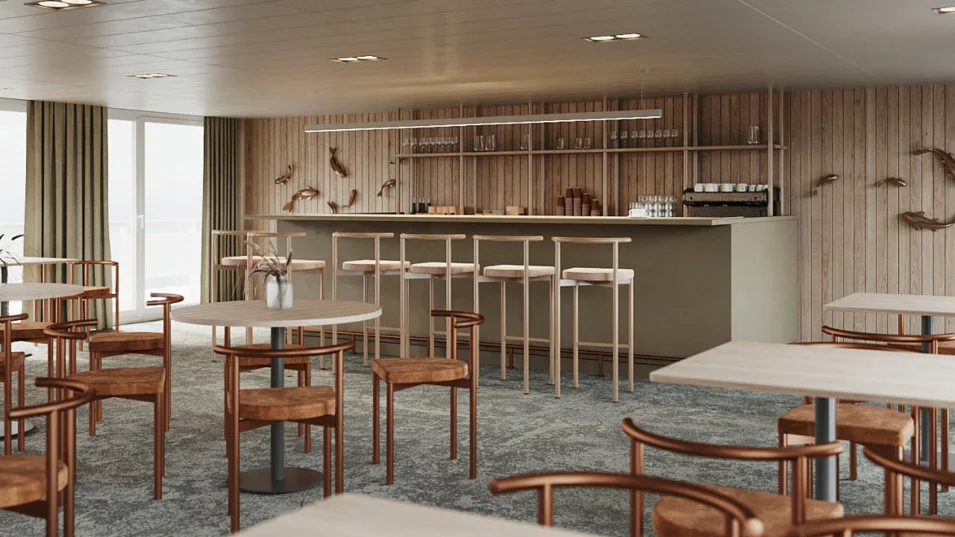
How many projects do you normally have in the pipeline?
Five or six, but at different stages. Some are at the stage of a concept: we create interiors and their visualizations. Others are at the stage of interior drawings. Some are under designer supervision. So, a lot of things are happening at the same time.
It is obvious that all vessels are different, but on average, how long does it take from the very beginning to a ship setting sail?
If it is a new build, then it all depends on how much in advance the interior design project was ordered. Sometimes a vessel’s design and construction may take three years, and it is fine. But if it is a refit project, then we depend on the season a lot. The process takes half a year: if we start in summer, the vessel must hit the water by the next season. Two months for the interior concept, two weeks for choosing the materials. Then there are interior drawings, layouts, lighting, etc. When it’s all ready and the finishing materials have arrived, work starts on board the vessel, normally in winter, so that in May, by the beginning of the season, it’s all complete.
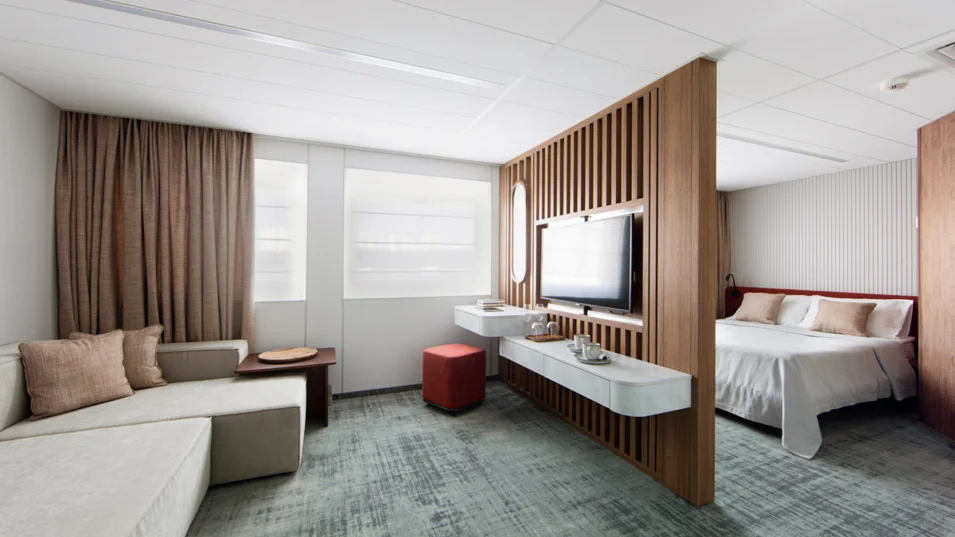
What do you think is most important about a ship interior?
Separating people’s pathways. It is a serious issue both for ships and for yachts. There can be a few groups of people on board who want to spend time in different ways. It is important to arrange it so that no one interferes with each other. And the crew must be invisible, but maximum efficient and accessible for everybody, with a possibility to get anywhere on board fast.
Which do you prefer – new projects or refits?
With new vessels you have a chance to influence the layout. You can think of zoning and the processes that will take place on board together with the owner, consider the some extra functions compared to a traditional arrangement when there are just cabins, a restaurant and a bar on board. Add a lounge, a spa, a gym, family or game spaces. All the pastime options must be reflected in the functionality of the interior, the layouts. What happens on the sundeck? What kind of entertainment will there be? Films, lectures, or are they themed cruises? Designing and building a new vessel may take years, and naturally there is a risk that the project will get frozen. Refits have an obvious advantage in this sense, which is the speed of realization.
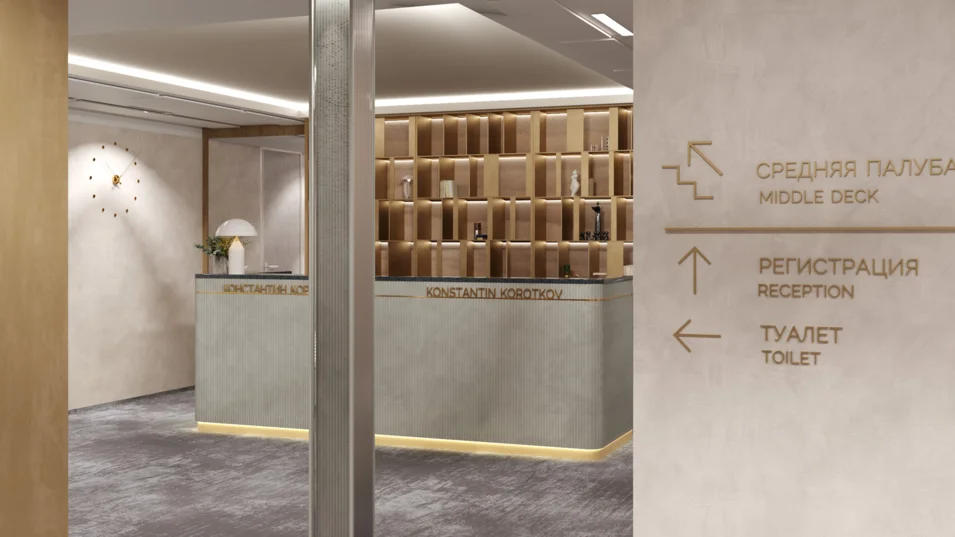
Which is more profitable for the owner?
I am not an owner, so I might be wrong, but probably refitting an old ship is more beneficial. On the other hand, a new ship may extend your audience, attract the categories of passengers that have never thought of cruises before. New builds should be on the rise now, as there is definitely a demand in this niche. The audience are getting much younger. When a new cruise ship appears in the market, it becomes popular – compared to a refit. That’s a fact. These vessels are capable of offering a different level of quality, and a different format of holidays.
Can you give an example?
Under 10-20 passengers on board. It is really in demand. This kind of vessel can be chartered like a yacht and used for a corporate all-inclusive cruise with an individual excursion or an entertainment program.
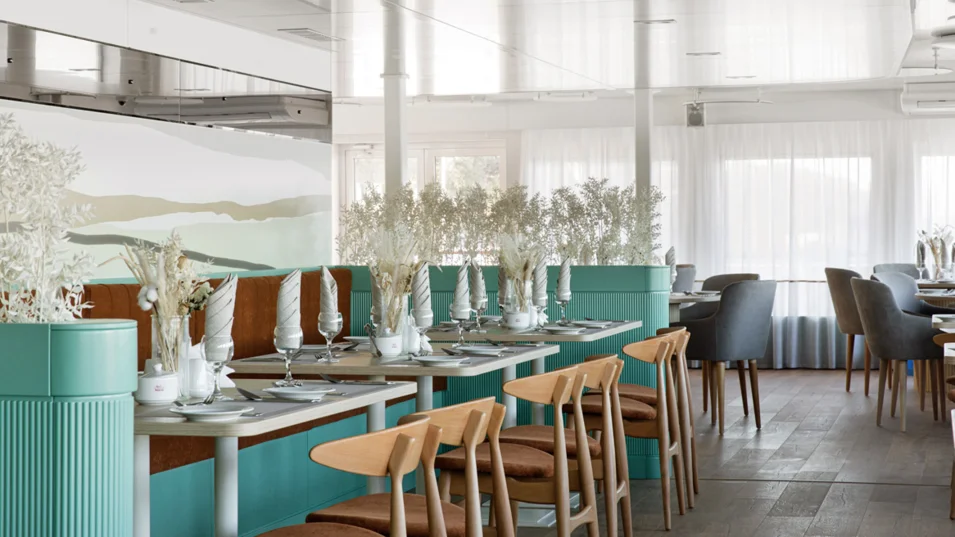
Have you worked on projects like this?
Yes, our new project, “Otchizna” is this kind of a compact “Omik” ship, which went on the first tour of the Volga river this summer. Stylistically, it is quite eclectic, with cabins and spaces devoted to different towns on the Volga river. There are books and items we collected in Kazan, Astrakhan and other places. We looked for craftsmen working in the traditions of a particular region and ordered décor items from them: vases, embroidery, paintings, embossed designs, lace, handmade carpets… At the same time the basic interior is quite simple.
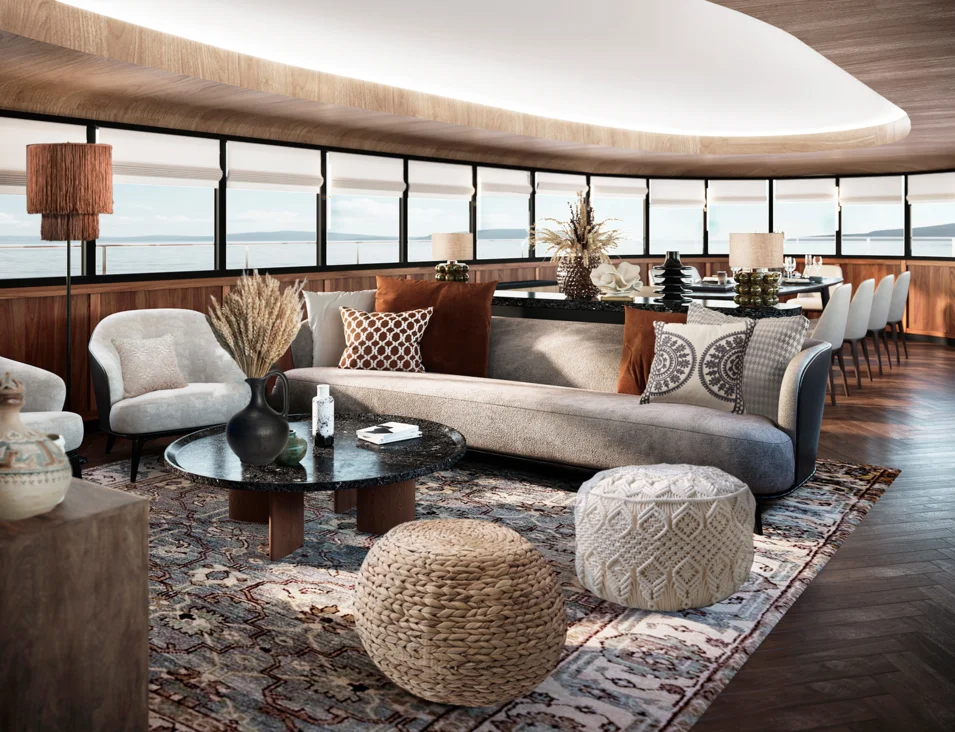
In my point of view, it is more interesting to make the cabins different. Moneywise, it is more rational when they are the same, but “Otchizna” is in fact a yacht. There are just four cabins on board: two on the main deck and two below. There is a saloon with a lounge and a dining area. And by the way it makes sense having stylistically different cabins on board a ship, too. If you travel with a group of friends, you can visit each other, or choose a particular “themed” cabin or choose a new space each time you travel. Although it certainly depends on the budget.
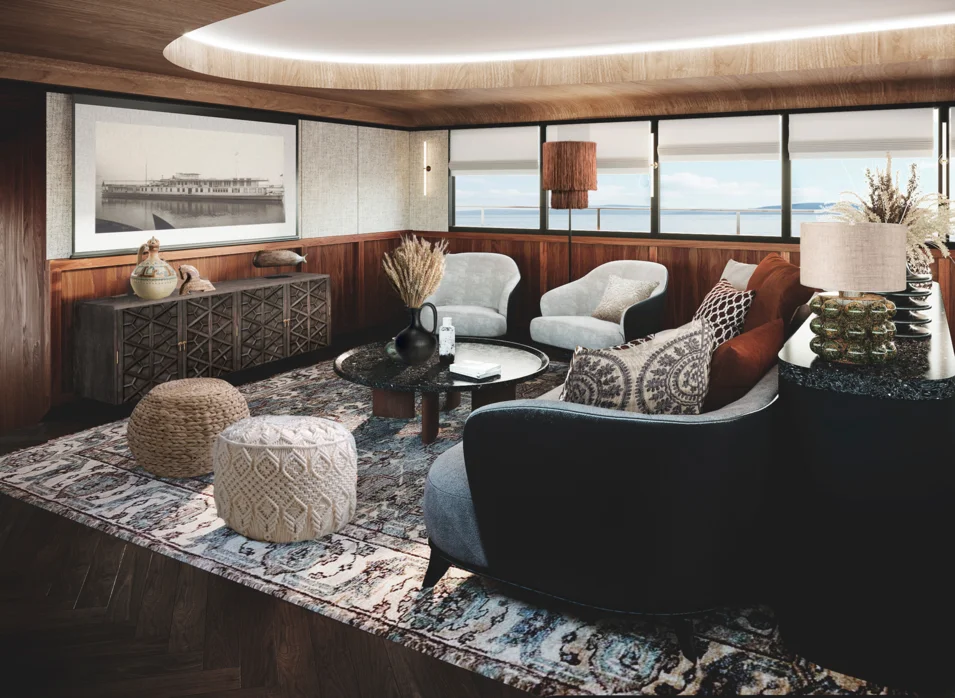
And as for the budget, does it often impose limitations?
It is natural that the budget for a refit or a new build takes into account the way a vessel is going to be used in the future. It is important to make a ship or yacht economically profitable, otherwise it makes no sense for the owner. The budget is never endless, but the most expressive solutions are often not the most expensive ones. It’s not all about money, but the need to think, to experiment and find the solution that will suit everybody. Both visually, and budget-wise.
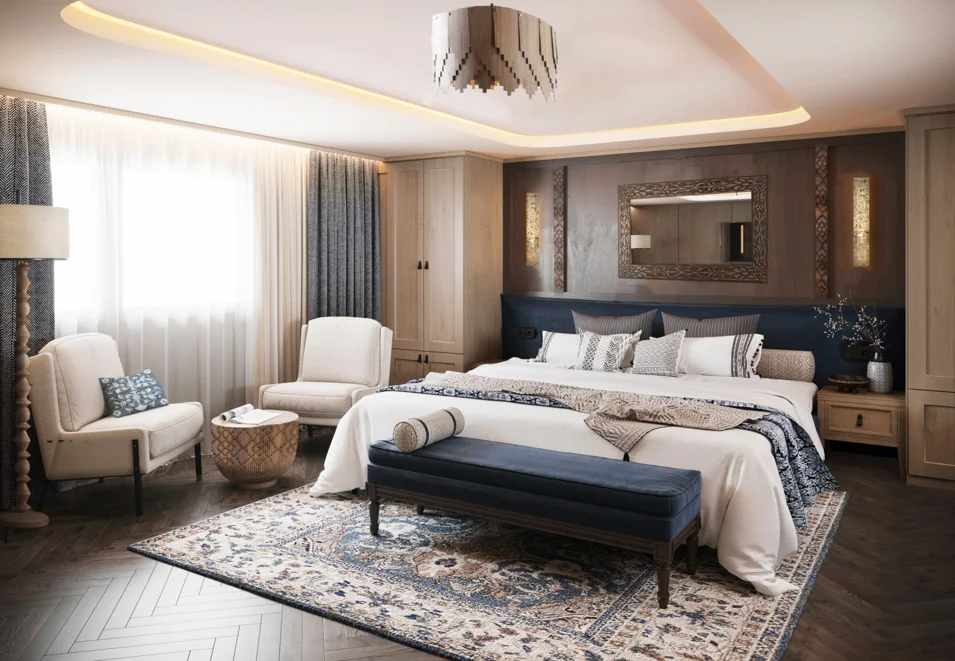
Is there anything special about using particular materials on board cruise ships like there is for yachts?
We use only special, certified materials. Aluminium honeycomb, non-flammable marine plastics and fabrics, laminate, carpets, lamps, sockets – everything is just like for yachts. All the components must be designed to compensate for the compression and twisting mobility of the hull and superstructure. We calculate loads and masses, and all elements must be mobile, lightweight, non-flammable and moisture-resistant. Quite often yachts and ships spend winters in an unheated mode. Therefore the interiors must not crack or suffer in any other way during the period spent in the cold.

You have successfully subscribed to our newsletter
